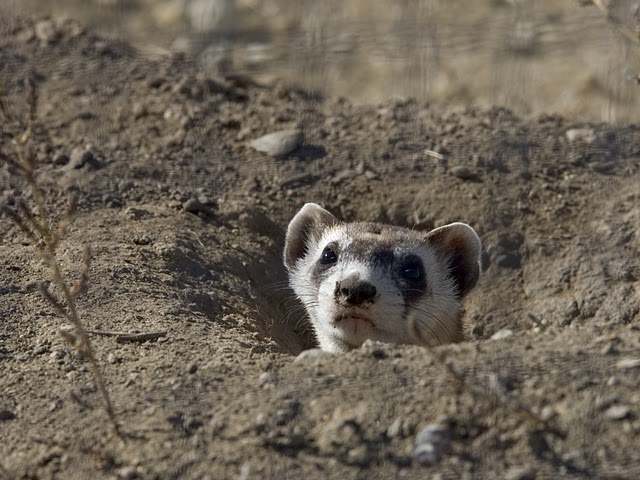PERC submitted a public comment on the proposed rule reform of a nonessential population of black-footed ferrets (mustela nigripes) in the Southwest.
We write today in support of the proposed rule because reducing the liabilities faced by landowners can promote the conservation of imperiled species. Recovering the black-footed ferret will require engagement by private landowners. By protecting these essential landowners who accommodate the species reintroduction from unwanted and intrusive regulatory burdens, the proposed rule will allow the U.S. Fish and Wildlife Service to better partner with landowners.
Believed to be extinct back in 1979, the black-footed ferret remains one of the most imperiled species. Despite (or perhaps even because of) strict federal regulations under the Endangered Species Act, the wild ferret population continues to decline. A loss of habitat and efforts to reduce prairie dog populations by private landowners are key threats to black-footed ferret recovery. Additionally, sylvatic plague can decimate ferret and prairie dog populations—the latter being the primary food source for ferrets.[1]
To promote black-footed ferret recovery, it is essential to engage private landowners in the conservation and restoration of habitat. However, Endangered Species Act regulations too often make endangered species a liability for landowners. A species’ presence triggers significant restrictions on how landowners can use their property and lowers the value of their land. This makes landowners reluctant to welcome these species onto their land, which undermines the law’s effectiveness for species that depend on the cooperation of private landowners (as most do). In effect, the strict regulations that ordinarily apply to endangered species make innocent species the enemy of the very people needed for their recovery.[2]
The proposed rule is likely to advance black-footed ferret recovery by reducing the liabilities faced by private landowners. This proposed rule would allow the reintroduction of ferrets across a larger landscape as part of a nonessential experimental population and include the Aubrey Valley Experimental Population area within a larger Southwest Experimental Population Area. This would significantly expand the potential reintroduction area and reduce the need to negotiate new safe harbor agreements with individual landowners. The Arizona Game and Fish Department has reported that the project with the Aubrey Valley Experimental Population has been successful at getting private landowners engaged, which suggests the proposed rule’s inclusion of parts of New Mexico and Utah could build on Arizona’s success.
By providing some regulatory relief to landowners, the proposed rule would make the ferret somewhat less of a liability than it otherwise would be under strict Endangered Species Act regulations. Landowners throughout the area designated for the experimental population will not face federal penalties if routine operations on their ranches or farms accidentally harm the species or its habitat. This could make landowners more willing to accommodate additional ferret introductions.
Ultimately, the best way to promote the species’ recovery is to make it and its habitat an asset for landowners. Private, voluntary conservation efforts provide a model for this shift. In central Montana, for instance, the nonprofit American Prairie Reserve is working to enhance prairie dog populations on nearby ranches and to provide a sustainable food source for the ferrets. The group rewards local ranchers who conserve prairie dog habitat through their Wild Sky beef program and direct cash payments.[3] More landowners are invested in conserving prairie dogs and habitat for black-footed ferrets due to American Prairie Reserve’s efforts to make wildlife an asset.
Recovering endangered species requires the participation of private landowners. Expanding the experimental population and extending the program’s regulatory relief can improve landowner engagement in black-footed ferret conservation, making landowners more likely to welcome ferret reintroductions and to conserve ferret habitat. But the program could be further improved by incorporating efforts to actively reward landowners for their critical contributions to species recovery. If these two steps are taken together, the black-footed ferret can continue on the road to recovery.
[1] See United States Geological Survey, Diseases of Terrestrial Wildlife – Sylvatic Plague.
[2] See Jonathan Wood, The Road to Recovery: How Restoring the Endangered Species Act’s Two-Step Process Can Prevent Extinction and Promote Recovery, PERC Policy Report (April 2018).
[3] See About Wild Sky.




